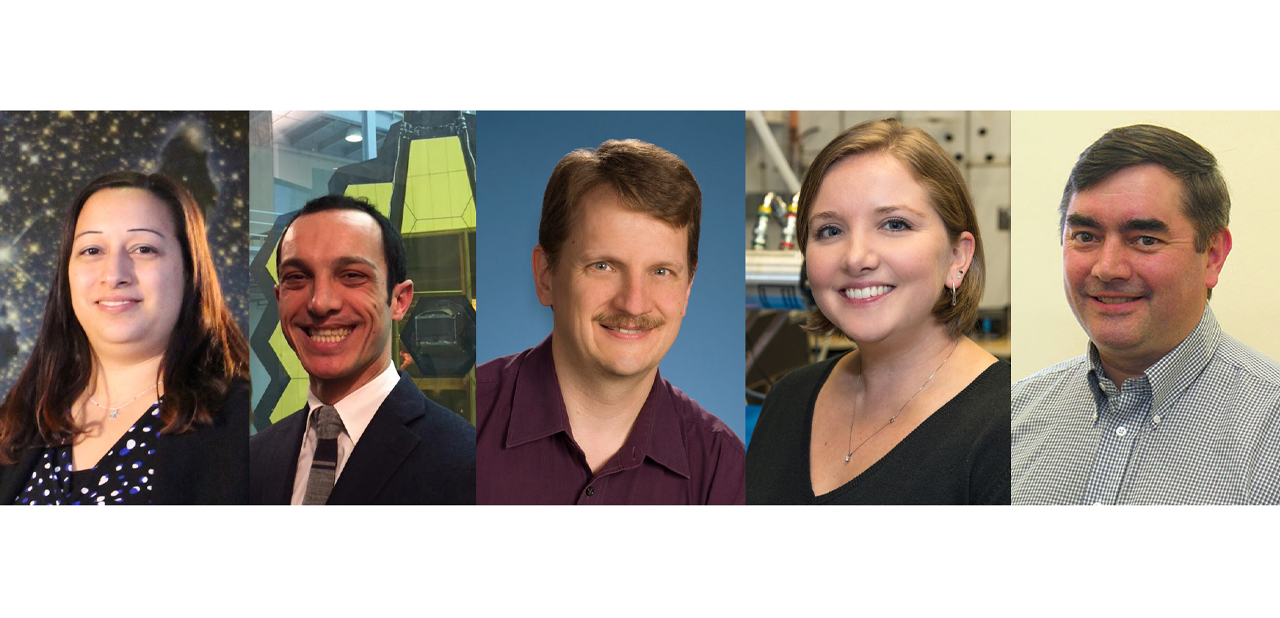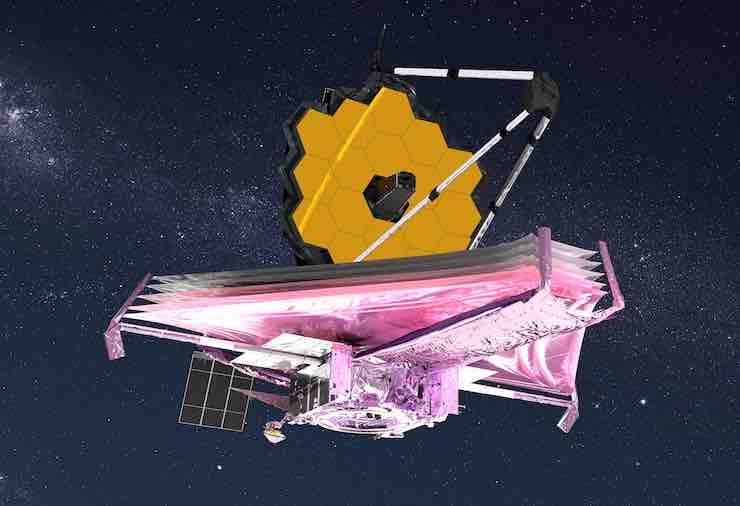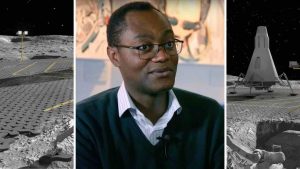
Five NASA experts, who worked for James Webb Space Telescope program (the biggest telescope of the history, situated in Lagrange point L2, 1.5 million kilometers from the Earth) agreed to meet us. To answer our questions, it was Giuseppe Cataldo (aerospace engineer), Knicole Colon (astrophysics), Jonathan Gardner (chief of the laboratory of observational cosmology), Jeffrey Livas (astrophysicist) and Stefanie Milam (astrochemistry).
Is there a rare possibility that the Webb Telescope, precisely because of its millimeter delicacy, could be influenced by gravitational waves? Besides, what can it tell us about dark matter?
The Webb telescope will not be affected by gravitational waves, at least not directly. The physical effect of a gravitational wave is a strain of the order of a part in 10^21. That means that the expected length change for the primary mirror of the Webb telescope (6.5 meters in diameter) would be 6.5 x 10^-21 meters, or about 1 x 10^-14 of a visible wavelength. This is just simply too small an effect to make a difference. There will be many things that change the dimensions by a larger amount. As for dark matter, Webb will be able to investigate it by looking at the effects of gravitational lensing on visible galaxies. Since Webb can look out to large distances, it will be able to see relatively small disturbances because there is simply more matter and therefore more dark matter in the path.
Will the Webb Telescope tell us something about the mysterious “Planet Nine”?
Webb is not a surveying telescope, so it will not contribute to the “search” for Planet Nine. The field of view is too small and not optimal for large area sky searches. However, should Planet Nine be detected and an orbit constrained within the Webb lifetime (which is now well over 10 years!!!), then YES! Webb would be the perfect facility to fully characterize this object in the outer solar system. With the wavelength coverage, resolution and sensitivity determining the composition, constraining the size, and possibly searching for satellites or rings could (should) be conducted with the Webb. As a side note – basically everything we are planning with the Ice Giants and TNOs/minor planets are ideal science cases for Planet Nine. From composition of clouds in the atmosphere, seasonal variability, and surface/atm composition.
Can you say for sure how long the life of the “James Webb Space Telescope” could be extended thanks to the fuel saved during launch?
It depends on momentum management. We will measure the momentum buildup due to solar pressure on the sunshield at about Launch + 30 days. Once we know that, the lifetime fuel calculation will be more secure.
Hypothetically, if one day we had the resources and technologies to reach the Webb Telescope, would we be able to extend its life, or is it impossible?
Webb was not designed to be serviced in orbit and NASA currently does not have any plans for this. Should the technology allow for it in a few years, especially considering Webb’s potentially extended lifetime, NASA might be willing to consider options. However, this will not come without challenges. For example, Webb does not have references that are usually needed to guide robots as they move into the position to reach. Let alone handles like those on Hubble, which were used by the astronauts to hold on to the telescope and perform their operations properly.
What is the limit of the Webb Telescope to be able to discover exoplanets? How far can he get to see a slight atmosphere of an exoplanet?
Similar to the response in question 2, Webb is not technically designed to survey the sky for as-yet-undiscovered exoplanets. However, Webb is anticipated to discover some exoplanets via direct imaging techniques, by observing a select set of stars and blocking out the star light to search for the faint light from a planet orbiting near that star. It remains to be seen how well Webb will operate in this way, but we definitely expect Webb to make some discoveries, especially of giant planets around some of the brightest and closest stars in the sky! There are several programs that will be doing such searches in Webb’s first year of science. Webb will observe many different types of exoplanets at all distances from us, to study their atmospheres. The closer an exoplanet is to us, the easier it is for us to study its atmosphere using Webb. While I don’t have exact numbers to share of how far away all the exoplanets that Webb is studying are, they are all within our own galaxy and typically all located within several hundred light years (where a light year is approximately 6 trillion miles and the distance light travels in one year).

Could the Webb Telescope help cosmologists find new confirmations on Einstein’s Relativity, and then discover new theories about the shape of the Universe?
While Webb is not the best way to directly test General Relativity, Webb’s infrared sensitivity will be very powerful for studying the energetics of black holes in the centers of galaxies. These processes are dominated by the strong gravity regime of General Relativity. In addition, Webb will make some contributions to the characterization of dark energy, which is providing another test Einstein’s theories.
By being able to see the formation of the first galaxies, and how the expansion of the Universe began, thanks to the Webb Telescope, you could guess the shape of the Universe, and where is it going?
The future of the Universe will be determined by the dark energy, which is currently causing the expansion of the Universe to accelerate. Whether the expansion of the Universe will continue to accelerate, start to decelerate, or even reverse into a collapse, will depend on whether the dark energy changes over time. Although Webb’s successor, the Roman Space Telescope is being designed to provide more conclusive information about the dark energy, Webb also has a role to play in this research by studying distant supernovae.
READ ALSO –> EXCLUSIVE INTERVIEW: Lawrence Krauss tells his theories about the Universe
The Webb Telescope has taught us that with patience and hard work, we can achieve great results. But before you get results, you must overcome the fear of failure. What do you recommend to young dreamers, so that they can overcome the fear of failure?
Building Webb was like building something completely new for the first time ever. Nobody knew the answers to many engineering challenges and yet, creativity, teamwork, progress in technical knowledge all contributed to advance the state of the art in many areas, leading to several novelties and retiring many fears and concerns. Think about the segmented mirror or the sunshield! In order to do that, it was necessary to perform countless tests to ensure everything worked just flawlessly. So, all these things represent ways in which scientists and engineers tried to overcome their fear for failure and ensure the delivery of a perfect product. Therefore, my recommendation to young dreamers is exactly to dream big and find the path to make them happen! Do your job well, ensure all the details are accounted for and use your talents as best as you can. Once you’ve done this, you will know you did all you could. Beyond this, sometimes one may just need a tiny bit of luck.



